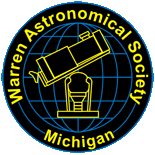| |||||||
 Solar Eclipse Cruise 1998 Aruba
Solar Eclipse Cruise 1998 Arubaby Sandy Kunz As our cruise ship, the Fascination, loomed into the harbor of Oranjestad, the Dutch capital of Aruba, the palm trees graciously bowed to the warm tropical winds. Oranjestad's Dutch architecture, a child's playhouse of orange, yellow and blue, would host the February 1998 solar eclipse on this West Indian island off the coast of Venezuela. The island buzzed in eager anticipation. Numerous astronomical groups positioned themselves at various optimal sites on the island or at sea. We all nervously watched as cascades of clouds jealously skirted across [continued]  A Tracking Mount for Astrophotography
A Tracking Mount for Astrophotographyby Clayton Kessler As I was planning my recent vacation in Tucson, I realized that the ability to do some astrophotography while I was there was very important to me. Unfortunately I was flying, and luggage restraints precluded carrying my Meade 8" SCT. I spent a fair amount of time researching the portable alternatives. At first, I thought I would build a classic "Barn Door" mount. I have seen these work very well with normal and wide angle lenses. Upon reflection I thought that a more sophisticated system would be more useful in the [continued]  Astro Chatter
Astro Chatterby Larry Kalinowski Mars makes its closest approach to Earth on May 1, making the month of April the best time to start observing this mysterious planet. The planet will reach 16.2 arcseconds in diameter, giving everyone a chance to see some of those dark surface markings and polar caps that we usually only see in books and past photos. Intel, the company that produces a computer chip that every computer should have inside, really made a big splash. The PENTIUM III, the next improvement in computer chips, was designed to identify its owner when ever interrogated [continued]  Minutes of Meeting
Minutes of Meetingby LoriAnn Skonieczny |
 New Members
New Membersby Joe Van Poucker The thing that makes the Warren Astronomical Society a great are its members. We are very happy to announce the following new members who joined during February of 1999. Please extend them a warm welcome.
Stardust Update NASA's Stardust spacecraft had a successful launch atop a Delta II rocket from Cape Canaveral in Florida, on Sunday, February 7, 1999, at 4:04 p.m. EST. This is the first U.S. mission destined for a comet and the first-ever [continued] Corrections by Joe Van Poucker Last month I submitted a Member's Anniversary column to the WASP. It has been brought to my attention that some off the anniversary dates are wrong. After further inspection of the Membership Database, that was handed down to me when I took over the position of treasurer this year, it appears that there is a big gap in the dates listed for when a member joined. I would like to get this updated so we have an accurate record of our memberships. I am going to try and continue posting the members anniversaries with the information I have. If you see your name in the article and know that it is wrong please contact me with the correct information. Although phone calls are not a problem I would prefer an e-mail to joevp01@aol.com< or that you get with me at one of the meetings. Thanks for your cooperation. Corrections reported to me for this Month are: Doug & Robin Bock - 26 years with club. |

